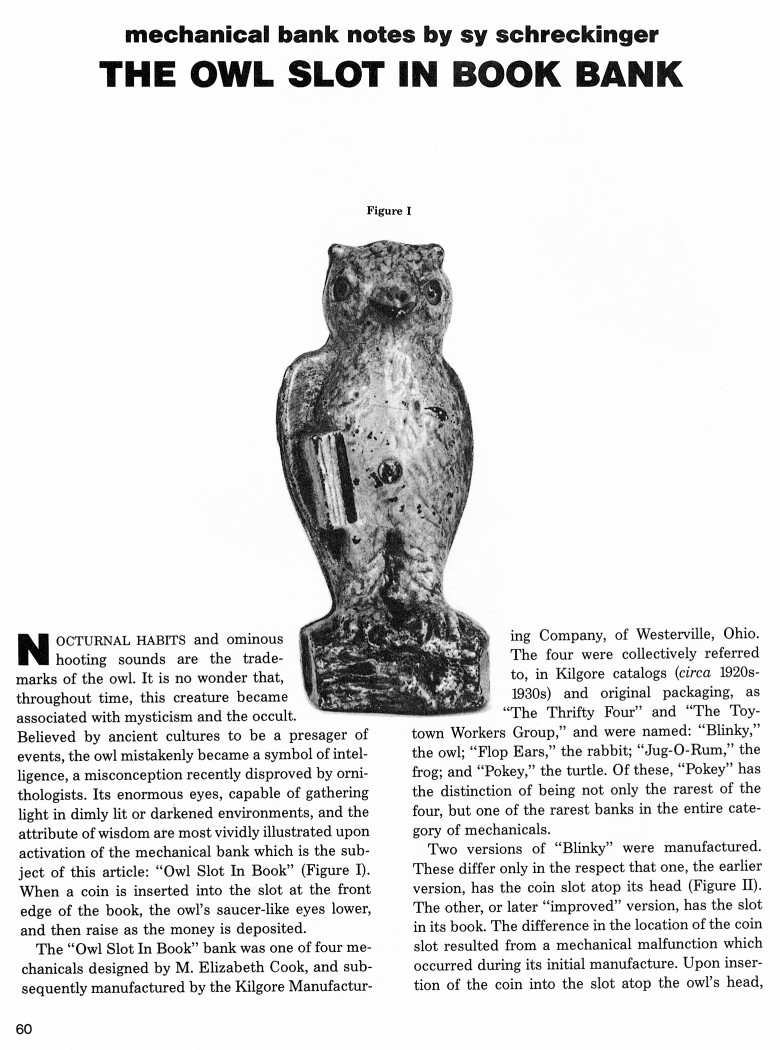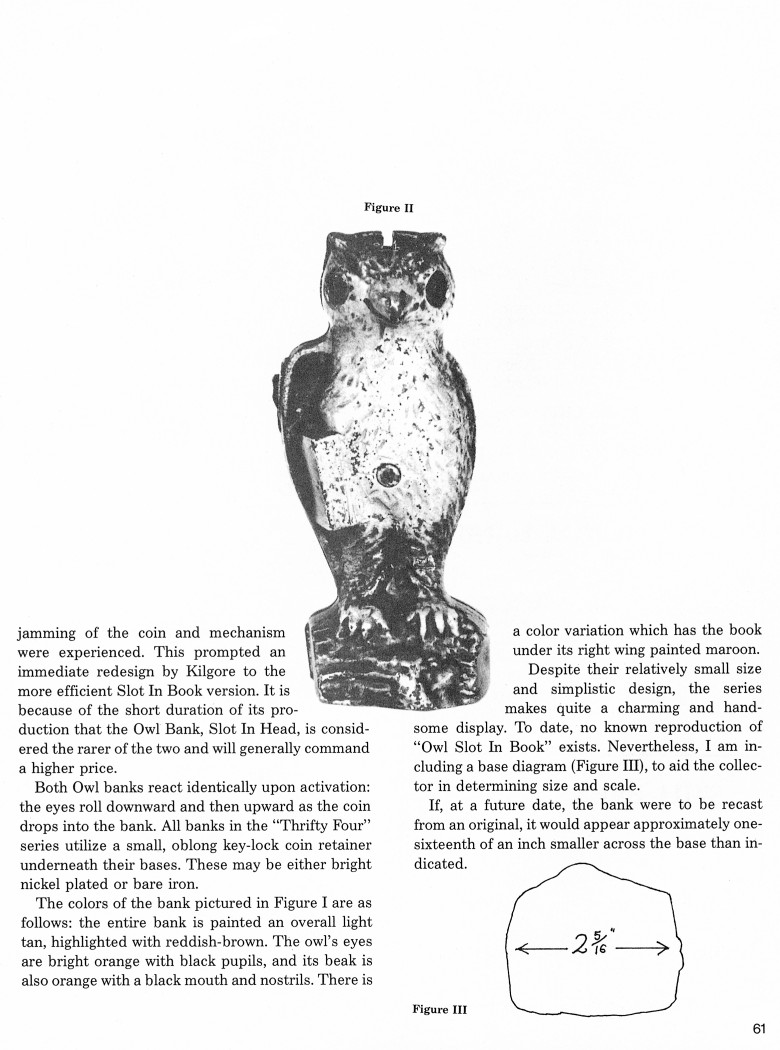|
The Owl Slot in Book Bank
by Sy Schreckinger – ANTIQUE TOY WORLD Magazine – January, 1990
Nocturnal habits and ominous hooting sounds are
the trademarks of the owl. It is no wonder that, throughout time, this
creature became associated with mysticism and the occult.
Believed by ancient cultures to be a presager of events, the owl
mistakenly became a symbol of intelligence, a misconception recently
disproved by ornithologists. Its enormous eyes, capable of gathering light
in dimly lit or darkened environments, and the attribute of wisdom are
most vividly illustrated upon activation of the mechanical bank which is
the subject of this article: "Owl Slot In Book" (Figure I). When a coin is
inserted into the slot at the front edge of the book, the owl's
saucer-like eyes lower, and then raise as the money is deposited.
The "Owl Slot In Book" bank was one of four mechanicals designed by
M. Elizabeth Cook, and subsequently manufactured by the Kilgore
Manufacturing Company, of Westerville, Ohio. The four were collectively
referred to, in Kilgore catalogs (circa 1920s‑1930s) and original
packaging, as "The Thrifty Four" and "The Toytown Workers Group," and were
named: "Blinky," the owl; "Flop Ears," the rabbit; "Jug-O-Rum," the frog;
and "Pokey," the turtle. Of these, "Pokey" has the distinction of being
not only the rarest of the four, but one of the rarest banks in the entire
category of mechanicals.
Two versions of "Blinky" were manufactured. These differ only in the
respect that one, the earlier version, has the coin slot atop its head
(Figure II). The other, or later "improved" version, has the slot in its
book. The difference in the location of the coin slot resulted from a
mechanical malfunction which occurred during its initial manufacture. Upon
insertion of the coin into the slot atop the owl's head, jamming of the
coin and mechanism were experienced. This prompted an immediate redesign
by Kilgore to the more efficient Slot In Book version. It is because of
the short duration of its production that the Owl Bank, Slot In Head, is
considered the rarer of the two and will generally command a higher price.
Both Owl banks react identically upon activation: the eyes roll
downward and then upward as the coin drops into the bank. All banks in the
"Thrifty Four" series utilize a small, oblong key-lock coin retainer
underneath their bases. These may be either bright nickel plated or bare
iron.
The colors of the bank pictured in Figure I are as follows: the
entire bank is painted an overall light tan, highlighted with
reddish-brown. The owl's eyes are bright orange with black pupils, and its
beak is also orange with a black mouth and nostrils. There is a color
variation which has the book under its right wing painted maroon. Despite
their relatively small size and simplistic design, the series makes quite
a charming and handsome display. To date, no known reproduction of "Owl
Slot In Book" exists. Nevertheless, I am including a base diagram (Figure
III), to aid the collector in determining size and scale.
If, at a future date, the bank were to be recast from an original, it
would appear approximately one-sixteenth of an inch smaller across the
base than indicated.
|

